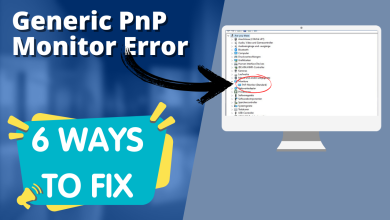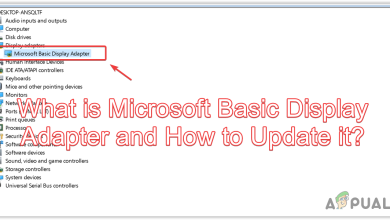Fix: Black Screen HDR After Adjusting Volume
You may encounter the Black Screen in the HDR mode while adjusting volume (or any other Windows/OSD notification) due to an outdated system’s Windows or drivers. Moreover, different refresh rates in Windows Settings and the graphics control panel may also cause the error under discussion.
The user encounters the black screen (for few seconds till the OSD fades out) when he tries to adjust the volume while playing a game (or using a full-screen application) in HDR mode. The issue is not limited to a particular make and model of the system/GPU manufacturer.

Before moving on with the solutions, check if replacing the display cable with an HDR-compatible HDMI solves the problem. Moreover, check if clean booting the system or temporarily disabling the Antivirus of your system resolves the issue. Also, make sure that the electrical equipment is properly grounded and no electromagnetic interference (from your phone or other devices) is causing the issue. Last but not least, disconnect your system from the Wi-Fi/ethernet and check if the black screen issue is resolved. If so, then reconnect the network and check if the issue remains solved.
Solution 1: Update Windows, Game Bar, and Drivers to the Latest build
Microsoft and its 3rd party vendors keep updating their products (Windows and its drivers) to pace with the latest technological advancements and patch reported bugs like the one causing the issue. In this context, updating Windows, Game Bar, and drivers of your system to the latest build may solve the problem.
- Update your system’s Windows and drivers to the latest build. If you are using an external graphics card, then check the OEM website (e.g., Nvidia website) for the latest drivers. Also, make sure to download and install the latest drivers for your monitor from the OEM website.

Check for Windows Updates - Then, launch a web browser and navigate to the web page of the Game Bar in the Microsoft Store.
- Now click on the Get button and then, in the dialogue box shown, select Open Microsoft Store.
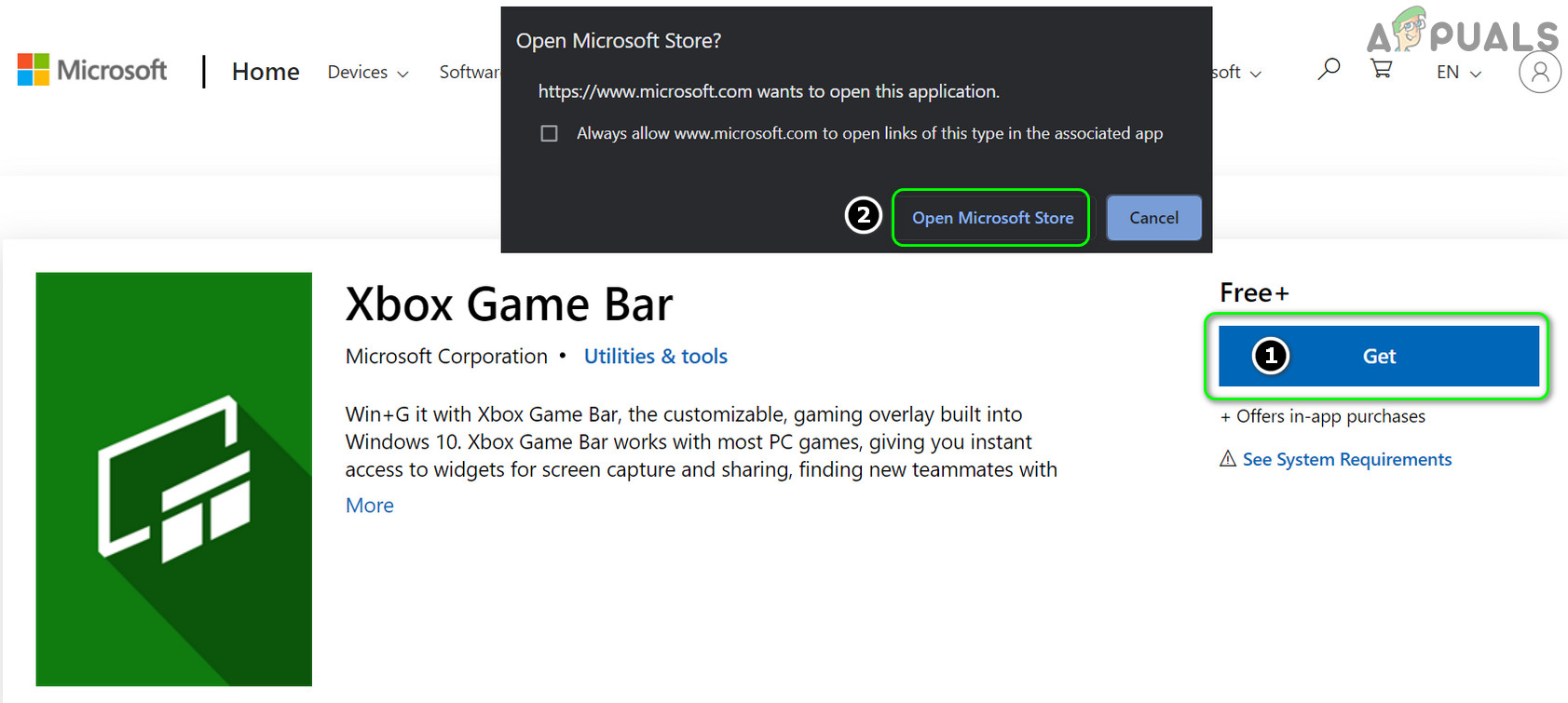
Open Xbox Game Bar in the Microsoft Store - Then, check if an update for the Game Bar is available. If so, then update the Game Bar and check if the HDR issue is resolved.

Update the Xbox Game Bar
Solution 2: Disable Full-Screen Optimization for the Game/Application
Windows uses the Full-Screen Optimization feature to enhance the user experience in a game/application that is being used in the Full-Screen mode. But this feature may hinder the operation of HDR and thus cause the issue at hand. In this scenario, disabling the Full-Screen Optimization for the game/application may solve the problem.
- Right-click on the game’s shortcut (for example League of Legends) and select Properties.
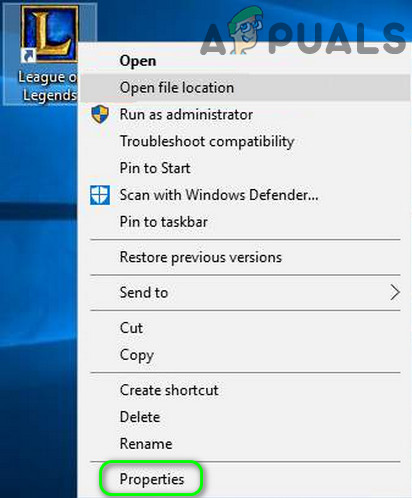
Open Properties of League of Legends - Then steer to the Compatibility tab and checkmark the option of Disable Full Screen Optimization.
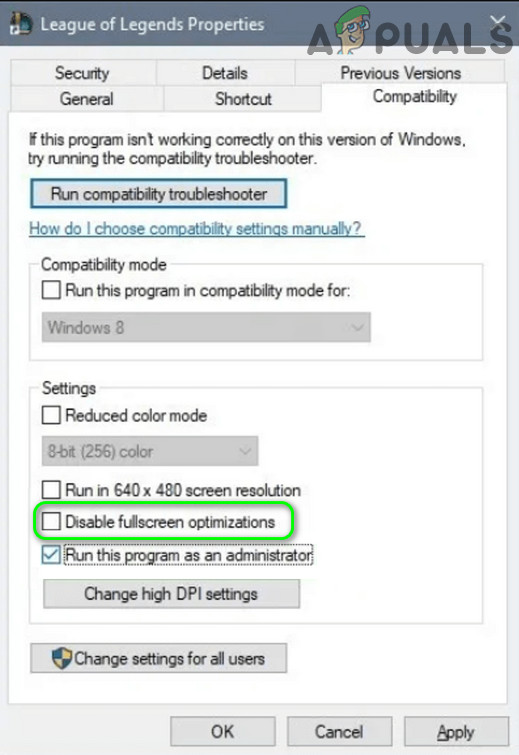
Disable Full-Screen Optimization of League of Legends - Now apply your changes and reboot your PC.
- Upon reboot, check if the HDR issue is resolved.
If the issue is still there, check if playing the games in windowed or borderless mode (you can try a 3rd party application to launch the game in the windowed or borderless mode if the game does not support the said modes) resolves the issue.
Solution 3: Disable the In-Game Overlay
You may encounter the issue at hand if different overlays trying to occupy the HDR display (i.e., game overlay and Windows overlay). In this context, disabling the game overlay may solve the problem. For elucidation, we will discuss the process for the NVIDIA GeForce Experience
- Launch the Nvidia GeForce Experience and open its Settings.
- Now, in the General tab, disable the In-Game Overlay by toggling its switch to the off position and then check if the black screen issue is resolved.

Disable In-Game Overlay
If that did not do the trick, check if disabling the HDR in the game settings and then reenabling it solves the issue.
Solution 4: Enable the Mouse’s Trail Feature
The HDR issue happens only when any of the Windows overlay overtakes the screen and causes the screen to move out of the HDR mode. In this context, enabling the trail of your system’s mouse may solve the problem as it will ensure that the screen stays in the HDR mode when any of the Windows overlay takes place. The instructions mentioned below may vary from user to user.
- Hit the Windows key and type Mouse. Then select Mouse Settings.

Open Mouse Settings - Now, in the right pane, choose Additional Mouse Options.
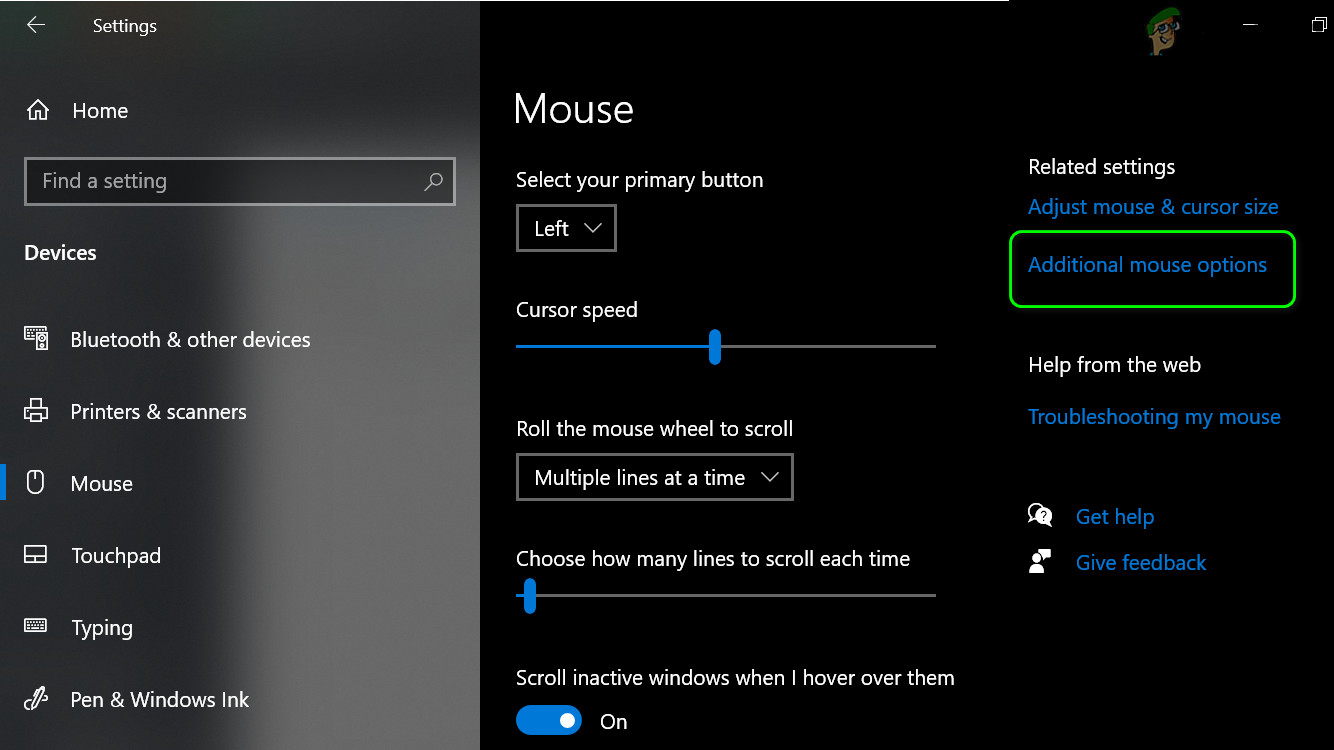
Open Additional Mouse Options - Then navigate to the Pointer Options tab and checkmark the option of Display Pointer Trails (Under Visibility).
- Now move the slider to as per your requirement (it will be better to use Short). Then uncheck the option of Show Location of Pointer When I Press the CTRL-key.

Enable Display Pointer Trails and Disable Show Location of Pointer When I Press the CTRL-key - Now apply your changes and check if the HDR issue is resolved.
Solution 5: Enable Performance Overlay in the Game Bar
The issue is caused by Windows overlay (many gamers called volume OSD, Windows notifications, etc. as the Windows overlay). The Windows overlay may stop causing the issue if the Performance Overlay of the Game Bar is enabled (as it will overwrite any attempts by Windows overlay to take the screen out of the HDR mode).
- Press the Windows key and open Settings.
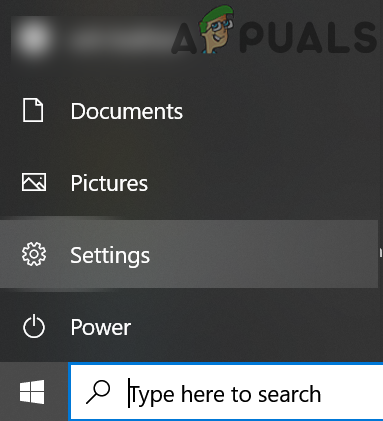
Open the Windows Settings - Now open Gaming and in the Xbox Game Bar tab, turn on the option of Enable Xbox Game Bar for Things Like Recording Gaming Clips, Chatting with Friends, and Receiving Game Invites.
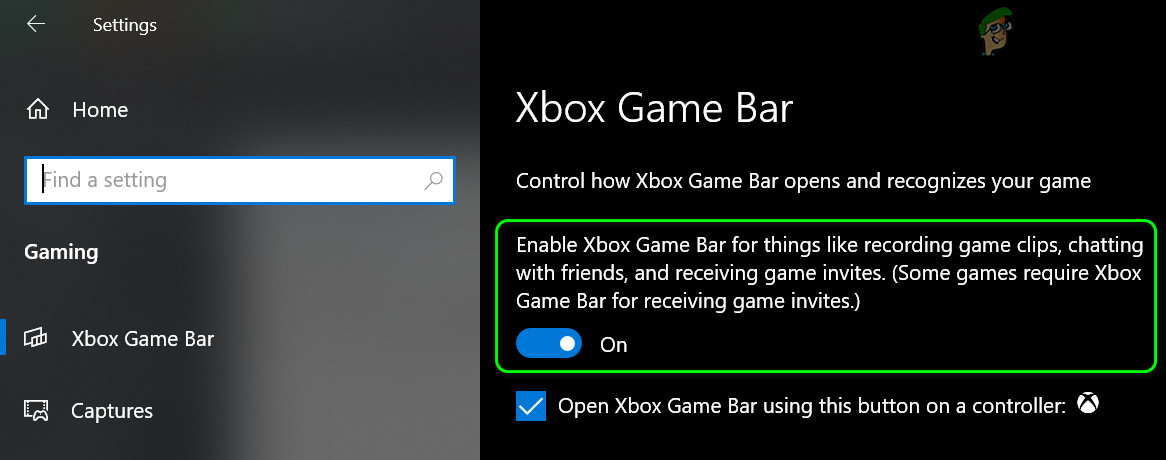
Enable the Xbox Game Bar - Then Hit the Windows key and type Game Bar. Then select Xbox Game Bar (you may use Windows + G keys to open the Game Bar).
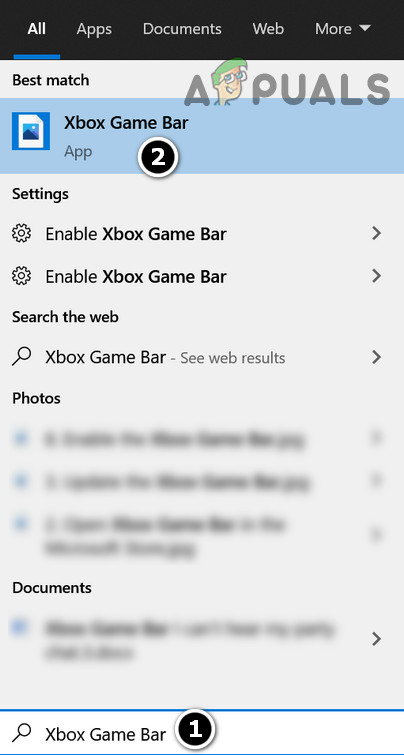
Open the Xbox Game Bar - Now open the Widget menu (by clicking the menu icon on the right of the clock) and select Performance (you can also try the Party Chat overlay).
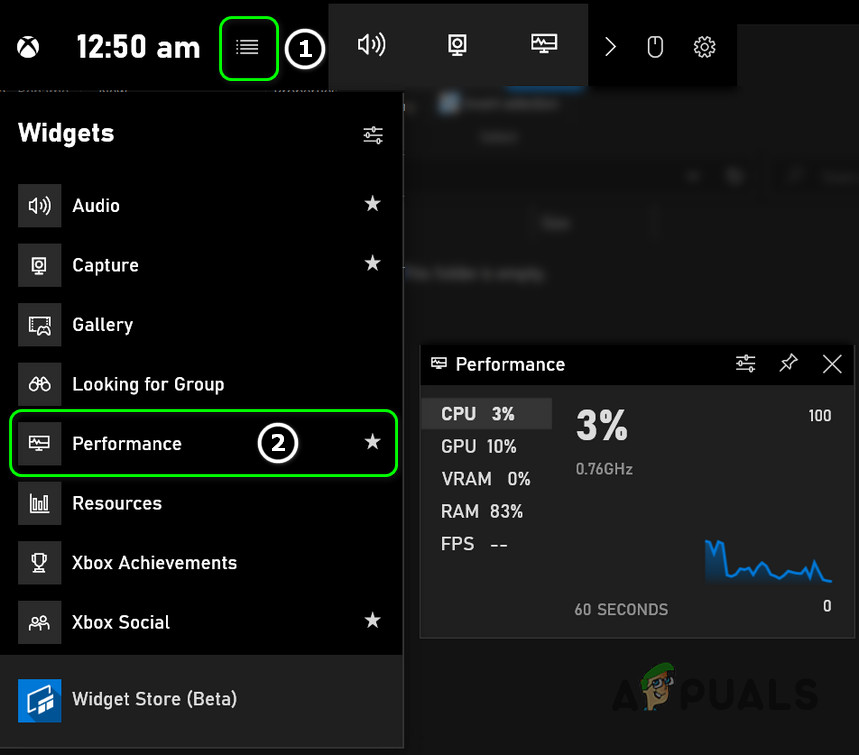
Enable Performance Widget in the Game Bar Settings - Then check if the black screen issue is resolved (this may cause a bit of stuttering).
Solution 6: Set the Refresh Rate of Your Display
You may encounter the current HDR issue if the refresh rates in the Windows Settings and your graphics control panel (e.g., Nvidia Control Panel) are not the same. In this context, changing the refresh rates in Windows and the graphics control panel may solve the problem. For elucidation, we will discuss the process for Nvidia Control Panel. Before moving on check at what refresh rate (yes, some games can be configured to be launched at a particular refresh rate) you are launching the game (if the issue is with a particular game only)
- Launch the Nvidia Control Panel and expand the Display option (in the left pane).
- Then select Display Resolution and check the Refresh Rate of your display (make sure that you are selecting the correct display).

Check Refresh Rate of Your Display in the Nvidia Control Panel - Now hit the Windows key and type Advanced Display Settings. Then select View Advanced Display Info.
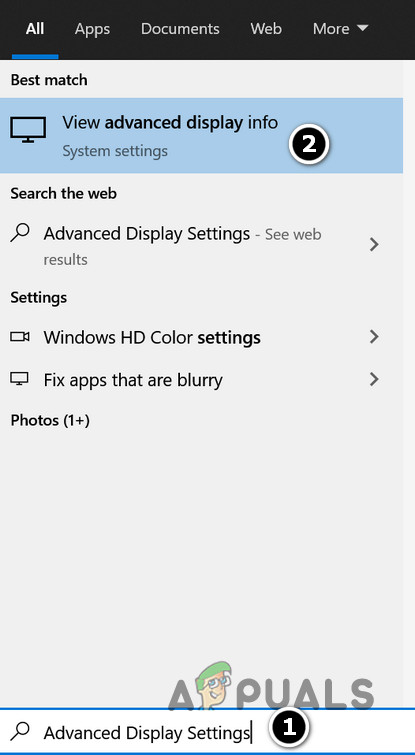
View Advanced Display Info - Then select the display in the ‘Choose Display’ dropdown and check the Refresh Rate. If there is any difference between the refresh rates, then edit the refresh rates, so, they match (it will be better to edit the refresh rate in Nvidia Control Panel, you may have to create a custom profile).
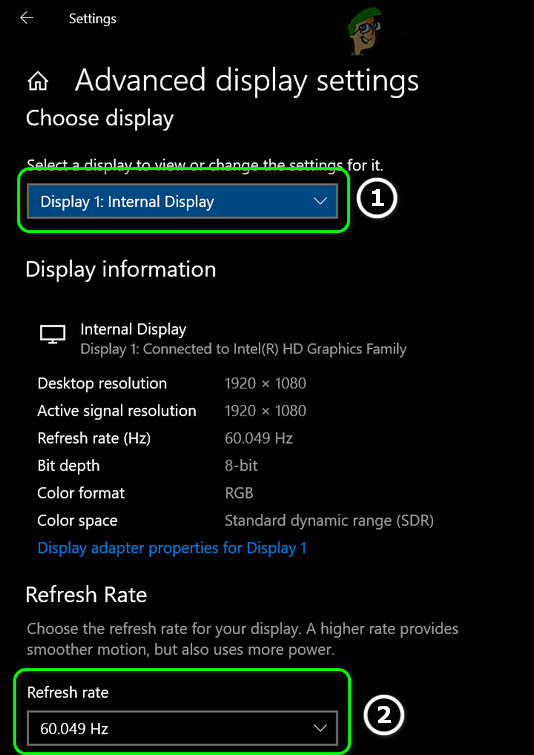
Check the Refresh Rate in the Windows Settings - Now reboot your PC and check if the HDR issue is resolved.
Solution 7: Enable DSR Factors in the Nvidia Control Panel
If the issue is still there, then you can enable the DSR (Dynamic Super Resolution) Factors feature in Nvidia Control Panel to get rid of the black screen issue. But keep in mind that DSR Factors may cause a performance impact on your system/graphics.
- Launch the Nvidia Control Panel and navigate to the Manage 3D Settings tab (in the left pane).
- Then, in the right pane, expand the dropdown of the DSR-Factor and choose a resolution that suits you (it will be better to choose as low as possible i.e., 1.2X).
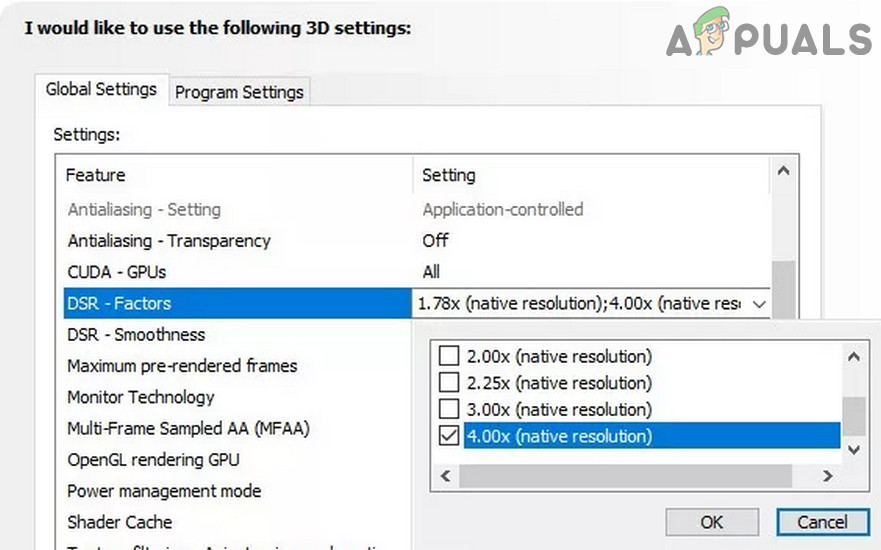
Use DSR Factors in the Nvidia Control Panel - Now launch the GeForce Experience and in the Games tab, select the problematic game (in the left pane).
- Then, in the right pane, click on the wrench icon (in front of the Optimize button), and then, in the sub-menu shown, choose the DSR Resolution.
- Now click on Apply and then launch the game.

Select the DSR Resolution for the Game in the GeForce Experience - Then make sure that the game is using the DSR Resolution and check if the HDR issue is resolved.
Solution 8: Use the OEM Software
If none of the solutions has worked for you, then using the OEM software like AL Suite by Asus or Logitech Gaming Software may solve the problem.
Using the AL Suite
- Launch a web browser and download the AL Suite by Asus.
- Then launch the downloaded file as administrator and follow the prompts to complete the installation.
- Now reboot your PC and launch the AL Suite.
- Then expand the System Tray and right-click on AL Suite.
- Now checkmark the option of ASUS Mini Bar and check if the HDR issue is resolved.
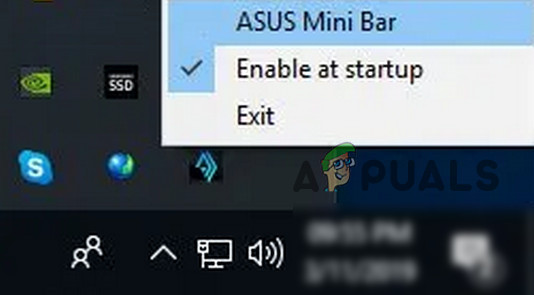
Enable Asus Mini-Bar
Using the Logitech Gaming Software
- Launch a web browser and download the Logitech Gaming Software.
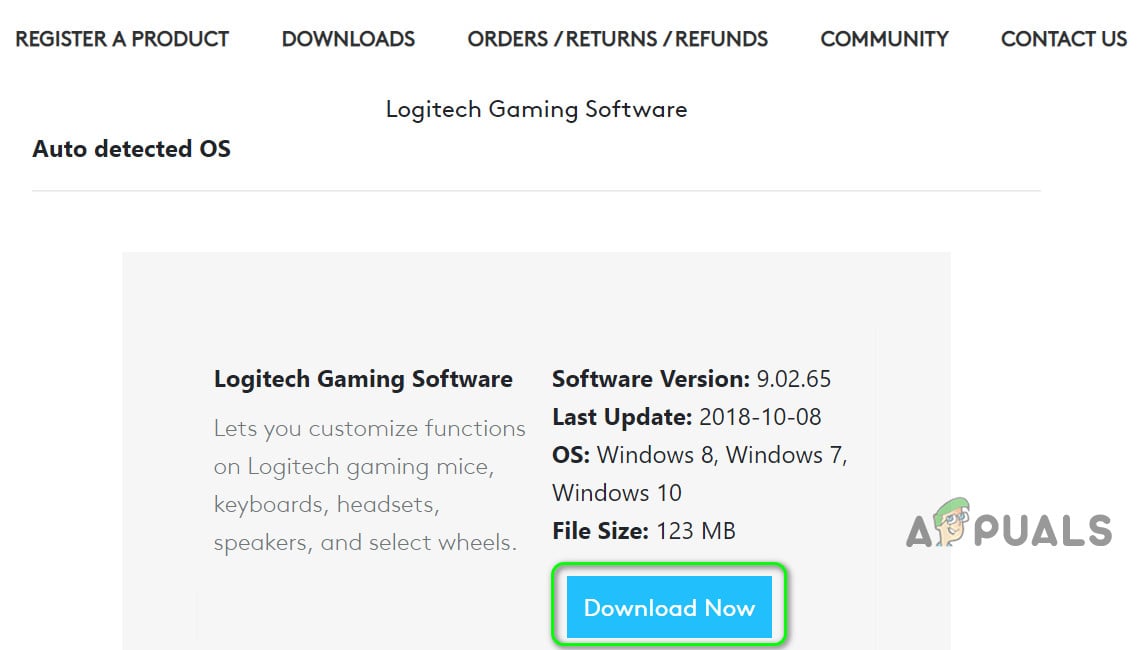
Download Logitech Gaming Software - Then launch the downloaded file as administrator and follow the prompts to complete the installation.
- Now reboot your PC and launch the Logitech Gaming Software.
- Then check if the HDR issue is resolved.
Solution 9: Reinstall the Graphics Driver
You may encounter the current black screen issue if the graphics driver of your system is corrupt. In this case, reinstalling the graphics driver may solve the problem.
- Rollback the graphics driver and check if the issue is resolved. If so, then you may have to block future updates of that driver (till the issue is resolved).
- If not, launch a web browser and open the OEM website.
- Now download the latest driver as per your graphics card.
- Then download/install the DDU (Device Driver Uninstaller utility) and boot your system into the safe mode.
- Then right-click on the Windows button and in the Quick Access menu, select Device Manager.

Open Device Manager of Your System - Then expand the Display Adapters option and right-click on your graphics card.
- Now select Uninstall and then checkmark the option of Delete the Driver Software for This Device.

Check the Option of Delete the Driver Software for This Device for the Display Adapter and click on Uninstall - Then click on Uninstall and let the installation complete.
- Now launch the DDU and remove the leftovers of the display driver.
- Then reboot your PC in the normal mode and install the latest version of the graphics driver (downloaded at step 3).
- Now reboot your PC and check if the HDR issue is resolved.
If the issue is still there, then disable the Windows notifications and use the volume control on the speaker (if possible) to rule out any disturbance by the Windows overlay (till the issue is resolved). If you are using more than one monitor, then check if selecting your non-gaming display as the primary display solves the problem. If you do not want to take that route, then either you may have to disable HDR in the Windows Settings or perform a clean installation of Windows.

